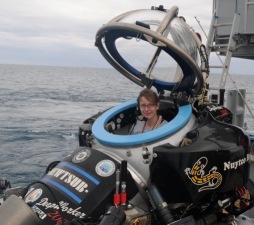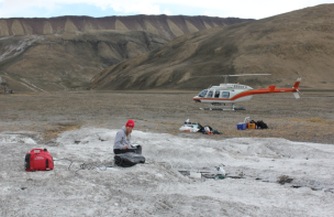Home
Recent Highlights
Objectives
Research themes
Training opportunities
How to apply
Investigators
Collaborators
Partners
Students
Post-doctoral fellows
Ph.D. students
M.Sc. students
Undergraduate
Completed
Seminars
Program management
Annual meetings
Contact us
Recent Highlights
Objectives
Research themes
Training opportunities
How to apply
Investigators
Collaborators
Partners
Students
Post-doctoral fellows
Ph.D. students
M.Sc. students
Undergraduate
Completed
Seminars
Program management
Annual meetings
Contact us
Contact information:
Ms Yella Jovich-Zahirovich
Project Coordinator
Tel. 514-398-7824
Fax. 514-398-7990
Dr. Lyle Whyte
Principal Investigator
Tel. 514-398-7889
Fax. 514-398-7990
NSERC CREATE
Canadian Astrobiology Training Program
Canadian Astrobiology Training Program

Canadian Astrobiology Training Program (CATP)
Post-doctorate candidates - To see a picture of the candidate place your cursor over their name
| Name | Institute | Supervisor | Research area |
Allyson Brady  Dirk Schumann |
McMaster University |
Dr. Greg Slater
|
Identifying biosignatures and characterizing associated microbial processes in modern analogues is critical to understanding early Earth and searching for evidence of life on Mars. My broad research interests include microbial diversity and identifying organic and isotopic biomarkers associated with extremophiles. Currently, I am working on characterizing carbon cycling and isotopic biosignatures in Antarctic endolith and Canadian geothermal microbial communities. |
René Heller  Dirk Schumann |
McMaster University |
Dr. Ralph Pudritz
|
Besides Earth and may be Mars, at least three moons in the solar system could host life: Titan, Europa, and Enceladus. With the detection of extrasolar moons at the horizon and with most exoplanets found in the stellar habitable zone (HZ) being gas giants rather than terrestrial planets, questions on the astrobiological prospects of their moons arise. Ultimately, moons in the HZ could be as numerous as terrestrial planets in the HZ. Within the CATP, we want to tackle the following questions: Do processes in circumplanetary disks result in a population of massive, habitable moons with sufficient amounts of water and biomolecules? Do these moons settle in habitable orbits? Could giant planets capture terrestrial planets into stable satellite orbits during their late-stage type I and II migration? How do secular and tidal effects on those moons constrain their habitability? These predictions shall help to find the first moons beyond the solar system and to characterize their habitability. |
Eriita Jones Eriita Jones |
University of Western Ontario |
Dr. Gordon Osinski |
My interests are in searching for liquid water and habitable environments on Mars, through analysis of potential fluvial and water ice related surface morphologies, using thermal modelling, mineral spectra and statistical analyses of other remotely sensed data. |
Jennifer Ronholm  Dirk Schumann |
McGill University |
Dr. Lyle Whyte
|
Microbially induced mineral precipitation (MIMP) is a natural occurrence which has been associated with a wide range of bacterial isolates. MIMP is an area of interest in astrobiology since the minerals produced biologically might be distinguishable from abiologically produced minerals and may therefore serve as a biosignature. However, very little is currently understood about MIMP and the structural detail of the resultant minerals. This project aims to determine if biologically produced minerals are distinguishable from abiotic minerals and what the best method of detecting biogenic crystals is. In addition, the cell wall will be studied in detail to determine how biological structural variation may effect crystal nucleation. |
Dirk Schumann  Dirk Schumann |
University of Western Ontario |
Dr. Neil Banerjee (University of Western Ontario) and Dr. Hojatollah Vali (McGill University)
|
Biominerals, which are minerals produced by organisms, have been proposed as potential biosignatures to infer the presence of extinct and extant life in both terrestrial and extraterrestrial rocks (e.g., Martian Meteorite ALH84001). Our understanding, however, of the complex processes that occur during biomineralization remains rudimentary. Using samples collected from University Valley and Lake Untersee in the Antarctica, two regions of interest as possible analogues for the polar regions of Mars as well as the icy moons of Jupiter and Saturn, I will investigate the processes of microbial mineralization and biological induced geochemical and mineralogical alteration signatures to understand the key mechanisms at bio-inorganic interfaces. This is achieved by integrating conventional and advanced analytical techniques such as laser scanning confocal microscopy (LSCM), scanning and transmission electron microscopy (SEM & TEM), electron microprobe analyses (EMPA), and nanoscale secondary ion mass spectrometry (NanoSIMS). |
©2009 L. Whyte & CATP All Rights Reserved